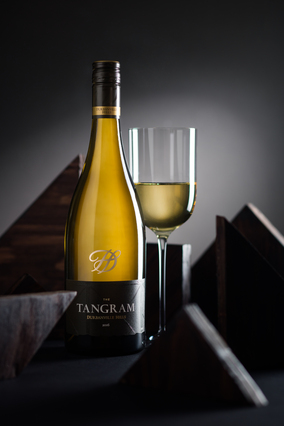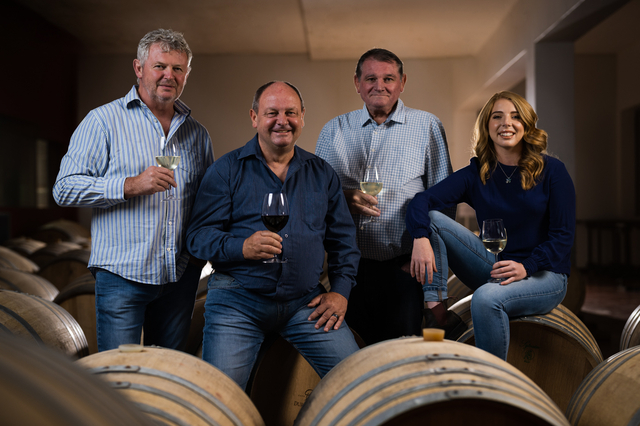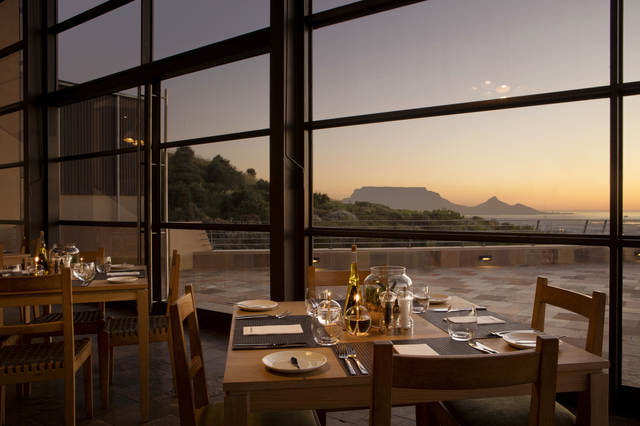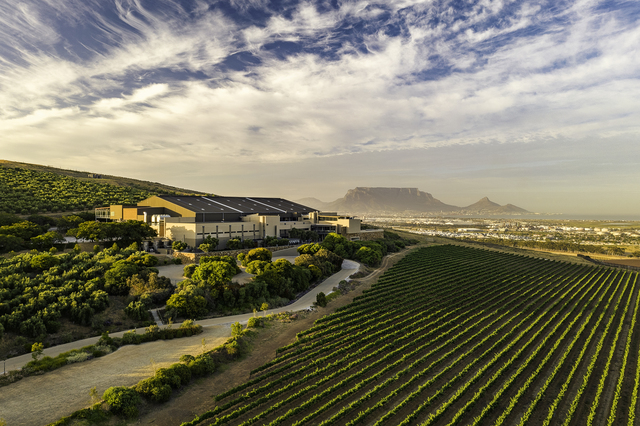It is rather extraordinary how many big wine regions are situated close to latitude 30° south – Santiago, Buenos Aires, Montevideo, Sydney, Auckland and Cape Town all lie on almost a straight line.
Although they share similarities in climate, the difference between Cape Town and these other locations is significant enough to produce wines that reflect the area it is made in. Cape Town offers almost a thousand more hours of sunlight per year, as well as higher temperatures yet cool sea breezes and mist, allowing winemakers in and around the Cape Town wine region to create award-winning wines.
The unique location of Durbanville Hills’ cellar – a mere 20 minutes from Cape Town’s city centre – offers not only a spectacular view of Table Mountain and Table Bay, but also an extraordinary terroir that stabilises temperatures and eliminates the extremes of heat and cold.
Although the area is renowned for its Sauvignon Blanc, which excels under conditions where cool, moist ocean breezes drench the vineyards, its range of red wines also benefit from the valley outskirts and opposing northern slopes, which provide excellent conditions that are slightly warmer – ideal for proper ripening and phenolic ripeness, in balance with sugar accumulation.

The unique terroir provides a platform for winemakers to produce award-winning wines across the ranges and cultivars, and 2021 was a year that heralded an incredible host of accolades: five double golds, 13 golds, five wines that achieved 4.5 stars, and 12 wines that scored 90 to 93.
Most notably was Durbanville Hill’s The Tangram White Blend 2018, which was recognised as one of the world’s 12 top-scoring wines at the 2021 Global Sauvignon Blanc Masters, hosted by The Drinks Business.
With 200 Sauvignon Blancs from around the world (blind-tasted), Durbanville Hills’ cool-climate excellence earned the wine a Top 12 recognition, along with the very best Sauvignon Blancs produced in France, Chile, New Zealand and the USA.
Cellar master, Martin Moore, is overjoyed at the incredible achievement of the flagship, classically styled blend with Sauvignon Blanc in the lead.

‘Back in 1999, during our first harvest, I had a vision of one day crafting a top-end blend; one that would showcase our unique location with its close proximity to the ocean and cooling sea breezes, valleys enclosed by hills offering slopes of varying altitudes, rich soils with excellent water retention, and a cool climate with a distinctive micro-climate. But we realised at the time that we were embarking on a long-term project. We would need to expand our knowledge, allow our vineyards to mature, and adapt our cellar if we wanted to realise our objective,’ he says.
‘To this end, we created a small cellar at Durbanville Hills a few years ago, dedicated to the making of truly hand-crafted wines, where each component of The Tangram White Blend 2018 was gently handled. Achieving a global Top 12 award has definitely made the wait and patience all that more gratifying.’
As with the Chinese, seven-piece Tangram puzzle – whereby one has to look at the whole to understand and form the myriad of images that can be shaped – The Tangram White Blend 2018 is greater than its parts. The wine is a blend of Sauvignon Blanc (76%) and Semillon (24%), matured for 10 months in French oak, and made for long-term cellaring.
Although the Sauvignon Blanc grapes were harvested from three vineyard blocks on the southern slopes where the valley opens up towards the West Coast, the majority of grapes were selected from a 31-year-old bush vine, ensuring the classical and mineral character of the wine. The two, 16-year-old trellised vineyards situated higher up on the hill – which, at 180m to 200m above sea level, allow exposure to cool south-easterly breezes from False Bay – impart typical fruity aromas.

The Semillon block was planted in 1996 in the cool heart of the valley, where the vines are known to contribute fullness. Satellite technology was used to identify the premium spots in each block, and grapes from these areas only were harvested.
To ensure gentle handling and that only the best grapes were harvested, the winemakers hand-selected a dedicated grape-picking team to harvest the grapes in the cool of the early morning.
In the cellar, the grapes were crushed and allowed to cold-settle for three days, with the stirring of lees once a day. The clean juice was racked to a stainless-steel fermentation tank and inoculated with a selected yeast strain. The first 5˚B of fermentation was done in-tank, and thereafter transferred to barrels to complete fermentation. The wine was matured in a combination of new and old French-oak barrels of varying sizes (300 litres, 500 litres and 600 litres) for a further 10 months to ensure a better extraction of the flavours and overall complexity. During maturation, the wine was regularly stirred to add complexity to the blend. After maturation, the winemaking team spent a number of days selecting the best barrels to create the perfect blend.
The wine is brilliant lime-green in colour, with aromas of fresh citrus, orange blossom, summer berries and a mix of fresh fruit, combining effortlessly with hints of lime and minerality. Rich and creamy with concentrated complexity, sweet wood spice, tropical fruit and hints of melon, the ending is fresh and one that lingers.
Durbanville Hills offers arguably one of the most view-drenched spots in Cape Town; a breathtaking kaleidoscope of colour where nature provides a front-row seat to the most enjoyable experience. It’s well worth a visit to explore Durbanville Hills’ various wine ranges – including the world’s Top 12 Sauvignon Blanc – followed by a lunch or dinner at its internationally award-winning restaurant, The Tangram. For more information or for online wine orders, visit www.durbanvillehills.co.za.
Contact details
+27 (0)21 558 1300
info@durbanvillehills.co.za
www.durbanvillehills.co.za


